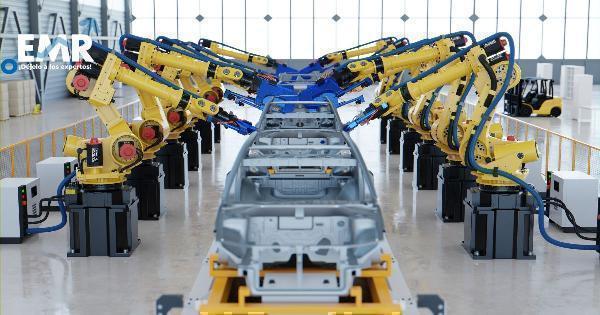 Zapier Automation – Automate Publishing. Free Your Time!
Zapier Automation – Automate Publishing. Free Your Time!
Cap Pack: A Comprehensive Guide to Capacitor Packs in Modern Electronics
Written by Scarlett Watson » Updated on: June 17th, 2025

Capacitor packs, often referred to as "cap packs," are essential components in modern electronics. They play a crucial role in the smooth functioning of electrical systems, providing stability, energy storage, and power management. But what exactly are capacitor packs, and why are they so important?
Understanding Capacitors
Before diving into capacitor packs, it's vital to understand what capacitors are. Capacitors are passive electrical components that store and release energy in the form of an electric charge. They consist of two conductive plates separated by an insulating material called a dielectric. Capacitors are used in various applications, from filtering signals to storing energy.
Types of Capacitors
Electrolytic Capacitors: Known for their high capacitance values, ideal for power supply filtering.
Ceramic Capacitors: Commonly used in high-frequency applications.
Tantalum Capacitors: Offer stable capacitance and are used in low-voltage applications.
What Is a Capacitor Pack?
A cap pack is a collection of individual capacitors assembled into a single unit. This configuration allows for enhanced performance, as the capacitors can work together to handle higher loads, manage voltage fluctuations, and provide more efficient energy storage.
Common Applications of Capacitor Packs
Power Supplies: To smooth out voltage ripples.
Electric Vehicles: For regenerative braking systems.
Audio Equipment: To filter and stabilize audio signals.
How Capacitor Packs Work
Capacitor packs work on the principle of energy storage and release. When connected to a power source, the capacitors in the pack charge up by accumulating electrons on one plate while repelling them from the other. Once fully charged, they can release this energy when needed, providing a quick burst of power.
Charging and Discharging Process
Charging: When voltage is applied, capacitors accumulate charge until they reach the applied voltage level.
Discharging: When the power source is removed, the capacitors release their stored energy to the circuit.
Types of Capacitor Packs
Capacitor packs can be configured in different ways to meet specific needs:
Series Capacitor Packs: Capacitors are connected end-to-end, increasing the overall voltage rating.
Parallel Capacitor Packs: Capacitors are connected side-by-side, increasing the overall capacitance.
Hybrid Configurations: A combination of series and parallel connections for optimized performance.
Advantages of Using Capacitor Packs
Capacitor packs offer several advantages over single capacitors:
Enhanced Performance: By combining multiple capacitors, packs can handle larger power loads.
Energy Efficiency: They reduce power losses by stabilizing voltage and filtering out noise.
Applications of Capacitor Packs
Capacitor packs are used in a wide range of applications:
In Power Supply Systems: To smooth out fluctuations and provide stable power.
In Electric Vehicles: For energy recovery during braking and to support acceleration.
In Audio Equipment: To filter out unwanted noise and provide cleaner sound output.
Choosing the Right Capacitor Pack
Selecting the right capacitor pack depends on several factors:
Voltage Rating: Must match or exceed the system's voltage requirements.
Capacitance: Determines the amount of energy the capacitor can store.
Installation and Safety Tips
Capacitor packs should be handled with RC Drift car due to their ability to store large amounts of energy:
Proper Handling: Always discharge capacitors before handling to prevent electric shock.
Safety Precautions: Use insulated tools and wear protective gear when working with capacitors.
Maintenance of Capacitor Packs
Regular maintenance can extend the life of capacitor packs:
Regular Inspection: Check for signs of swelling, leakage, or corrosion.
Testing: Use a multimeter to test the capacitance and ensure it's within the specified range.
Capacitor Packs in Renewable Energy
Capacitor packs play a significant role in renewable energy systems:
In Solar Power Systems: Used to store and release energy efficiently, smoothing out the power supply.
In Wind Energy Systems: Help in stabilizing the energy output by storing excess power and releasing it when needed.
Capacitor Packs vs. Batteries
While both capacitor packs and batteries store energy, they have distinct differences:
Functionality: Capacitors charge and discharge rapidly, whereas batteries provide a steady current over time.
Pros and Cons: Capacitors have a longer lifecycle and faster response time, but they store less energy compared to batteries.
Recent Advances in Capacitor Pack Technology
Technological advancements have led to the development of more efficient capacitor packs:
Supercapacitors: Offer higher energy density and faster charging times.
Integration with Smart Grids: Capacitor packs are now being integrated into smart grids for better energy management.
Environmental Impact and Sustainability
Capacitors are more environmentally friendly compared to batteries:
Recyclability: Most capacitors can be recycled, reducing electronic waste.
Reducing Carbon Footprint: By improving energy efficiency, capacitor packs help in reducing overall carbon emissions.
Future of Capacitor Packs
The future of capacitor packs looks promising with ongoing research:
Potential Innovations: Development of capacitors with even higher energy density and faster charging capabilities.
Expanding Applications: Increased use in consumer electronics, medical devices, and renewable energy systems.
Conclusion
Capacitor packs are integral to modern electronic systems, providing reliable energy storage, enhancing performance, and contributing to energy efficiency. From power supplies to electric vehicles, their applications are vast and varied. As technology advances, capacitor packs are set to play an even more significant role in the future of electronics.
FAQs
1. What is the lifespan of a capacitor pack? Capacitor packs can last anywhere from 5 to 20 years, depending on usage, environmental conditions, and maintenance.
2. How do capacitor packs improve energy efficiency? Capacitor packs stabilize voltage, reduce power loss, and filter out noise, resulting in more efficient energy usage.
3. Can capacitor packs replace batteries? While capacitor packs can complement batteries by providing quick bursts of power, they are not yet capable of replacing batteries for long-term energy storage.
4. Are capacitor packs safe to use? Yes, capacitor packs are safe when used and handled correctly. However, they can store large amounts of energy, so proper precautions should be taken during installation and maintenance.
5. How are capacitor packs disposed of? Capacitor packs should be recycled or disposed of following local electronic waste regulations to minimize environmental impact.
Note: IndiBlogHub features both user-submitted and editorial content. We do not verify third-party contributions. Read our Disclaimer and Privacy Policyfor details.
Copyright © 2019-2025 IndiBlogHub.com. All rights reserved. Hosted on DigitalOcean for fast, reliable performance.

















